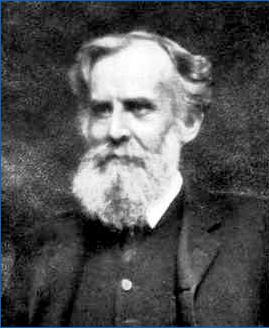John Venn (nonfiction)
John Venn, FRS, FSA (4 August 1834 – 4 April 1923) was an English logician and philosopher noted for introducing the Venn diagram. Venn diagrams are used in the fields of set theory, probability, logic, statistics, and computer science.
He began his education in London joining Sir Roger Cholmeley's School, now known as Highgate School, with his brother Henry in September 1846. He moved on to Islington proprietary school and in October 1853 he went to Gonville and Caius College, Cambridge. In 1857, he obtained his degree in mathematics and became a fellow. In 1903 he was elected President of the College, a post he held until his death. He would follow his family vocation and become an Anglican priest, ordained in 1859, serving first at the church in Cheshunt, Hertfordshire, and later in Mortlake, Surrey.
In 1862, he returned to Cambridge as a lecturer in moral science, studying and teaching logic and probability theory, and, beginning around 1869, giving intercollegiate lectures. These duties led to his developing the diagram which would eventually bear his name. Venn wrote:
I began at once somewhat more steady work on the subjects and books which I should have to lecture on. I now first hit upon the diagrammatical device of representing propositions by inclusive and exclusive circles. Of course the device was not new then, but it was so obviously representative of the way in which any one, who approached the subject from the mathematical side, would attempt to visualise propositions, that it was forced upon me almost at once. — John Venn
In the News
Venn diagram scene of cage-match brawl between glyph gangs.
Set theorist and crime-fighter John Venn gathers his thoughts, groups them into logical categories.
Fiction cross-reference
Nonfiction cross-reference
External links:
- John Venn @ Wikipedia


